On city streets in Mexico’s largest cities, an esteemed culinary heritage is up against another deeply ingrained, yet less auspicious, tradition: corruption.
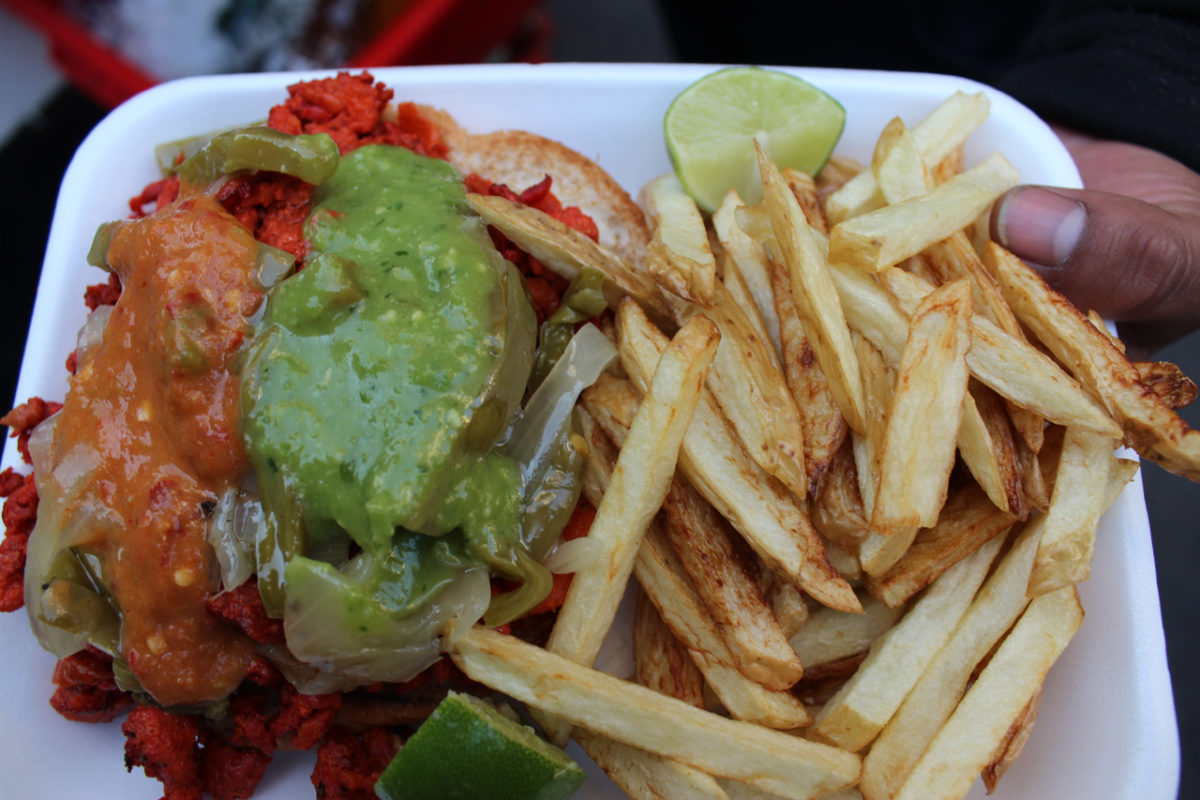
Chicken with red and green salsa, potato fries, and limes, served in the streets of DF.
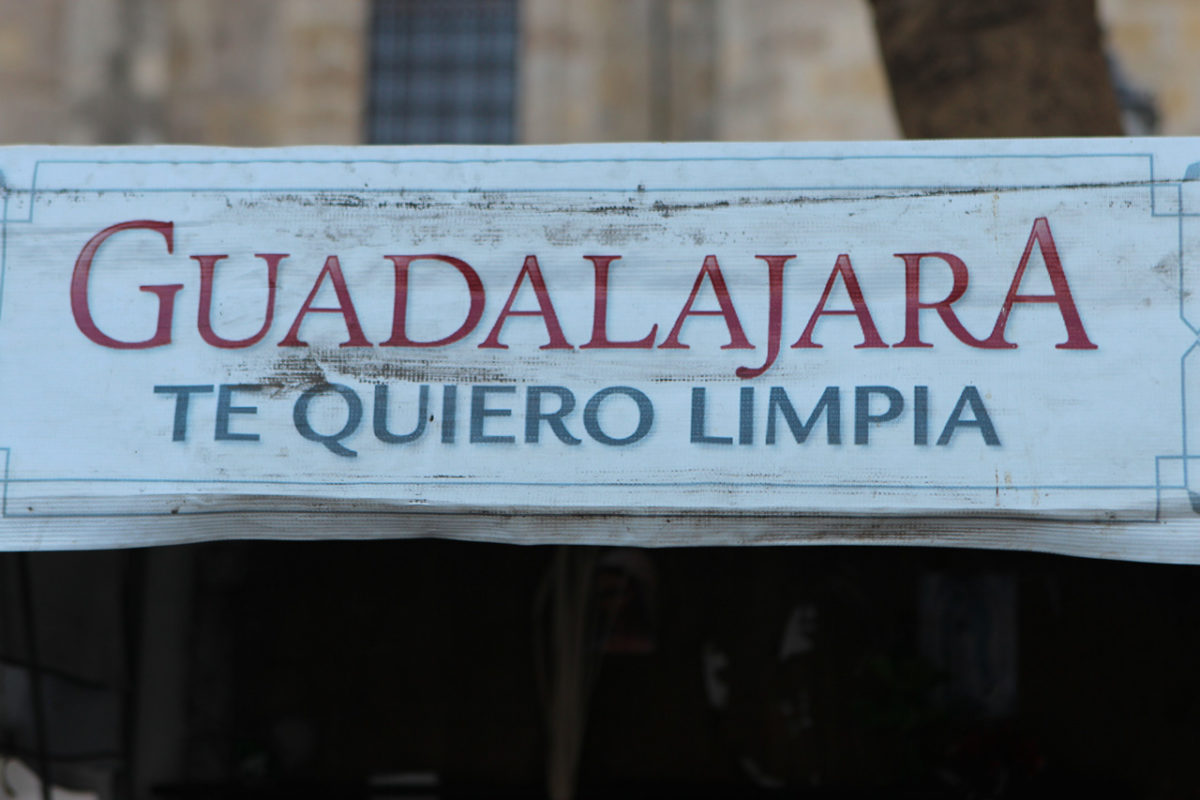
Meaning "Clean Guadalajara". The local government launched an environmental campaign to free the city of pollution and waste in public spaces.
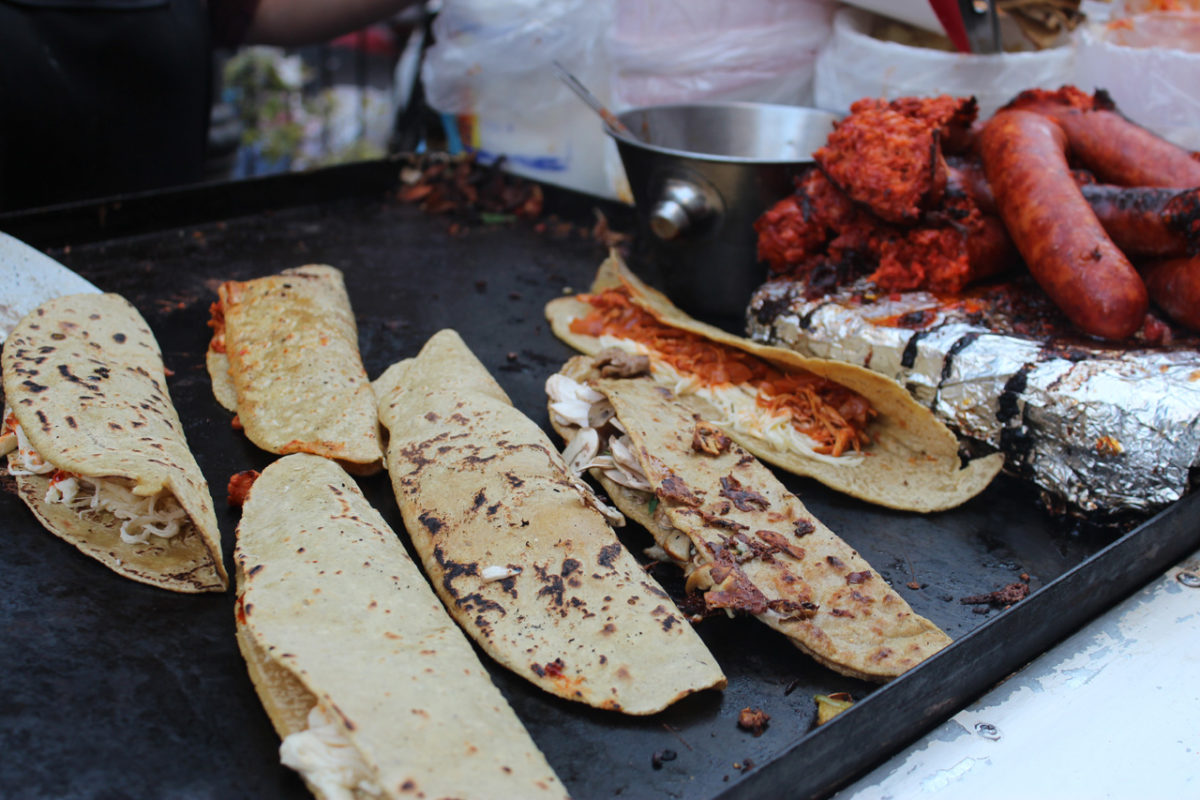
Corn tortillas filled with "queso Oaxaca" (thread cheese) and "tinga" (shredded spicy chicken) are among the most popular servings.
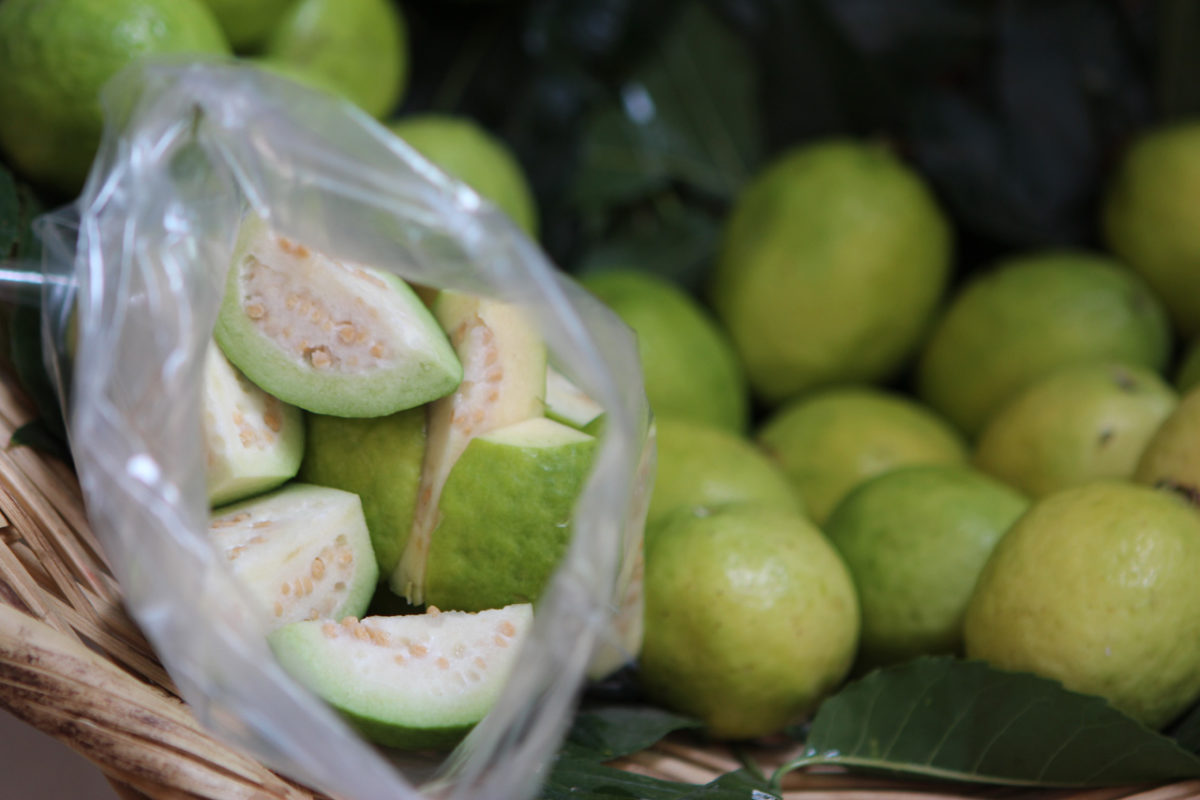
Street vendors do not always sell elaborate food. Here, this vendor sells fresh guavas.
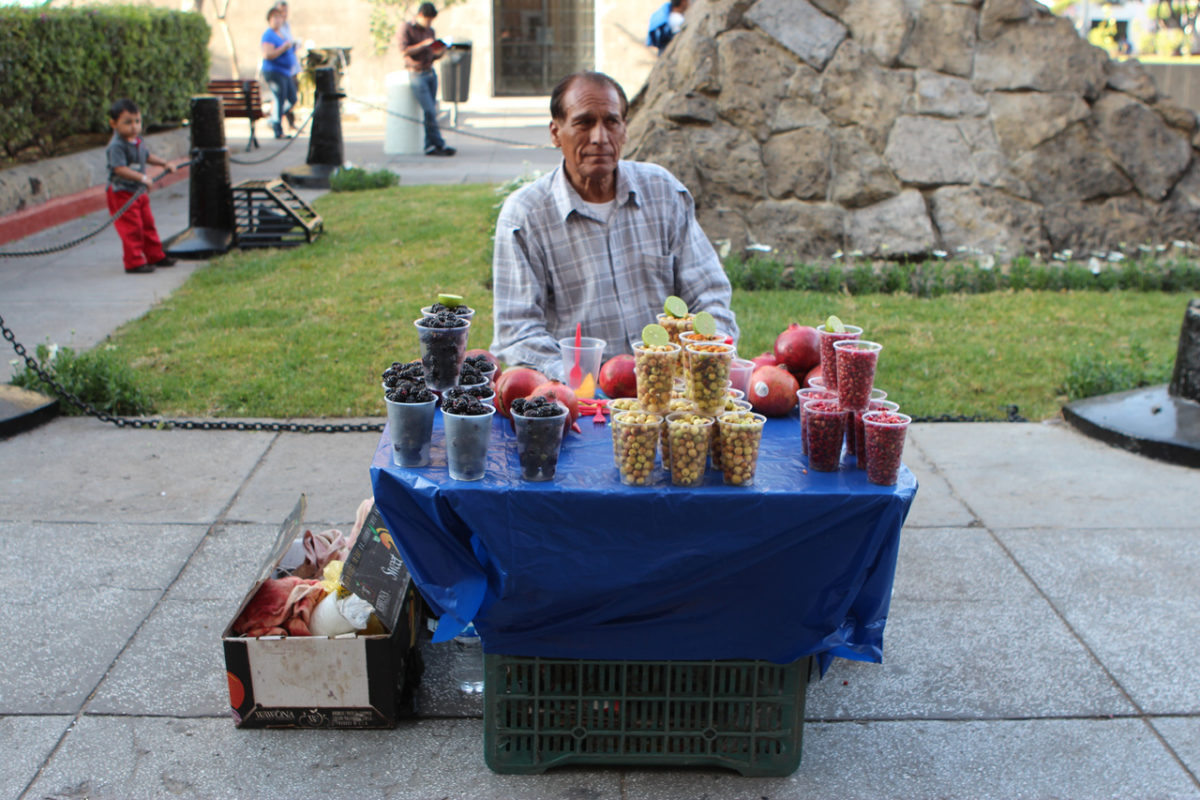
Selling on the streets is a source of employment for those with disabilities. In Guadalajara we met a mentally impaired and deaf vendor. Like him there were countless more.

"Chapulines" are grasshoppers that are commonly eaten in certain areas of Mexico. With lime and chili.
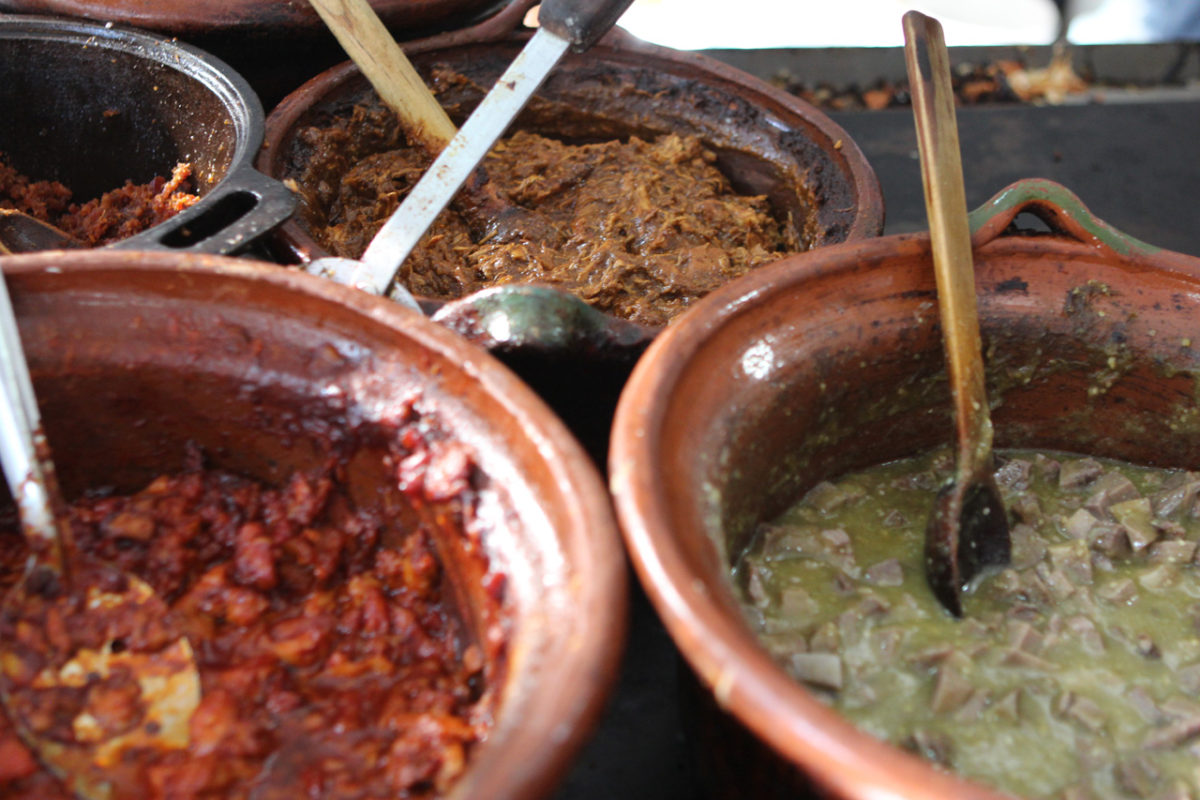
Different offerings on a cart.
MEXICO CITY, Mexico—On street corners and in plazas across Mexico City, food vendors set up grills, park wagons and lay down baskets to sell freshly made juices, tacos, and desserts. It’s a rich, flavorful tradition—and one that led Mexico’s cuisine to be recognized as a UNESCO Intangible Cultural Heritage of Humanity in 2010.
But behind the alluring smells and flavors are the people who create them: street vendors making a living amidst controversy. Here, in major cities like the nation’s capital and Guadalajara, lies an ongoing struggle that pits unlicensed vendors against those authorized to serve on the streets. The tension has fed an intricate system of bribes and led to numerous charges of corruption by local leaders.
“Last year there were numerous cases,” says Jesus Sosa Lopez, of Guadalajara’s Anti-Corruption office, describing “inspectors that physically abuse vendors when they kick them out of their spaces, extortion accusations towards inspectors that arbitrarily decide to turn a blind eye and corruption claims against high level authorities … exchanging public spaces for money and political capital.”

Chicken with red and green salsa, potato fries, and limes, served in the streets of DF.

Meaning "Clean Guadalajara". The local government launched an environmental campaign to free the city of pollution and waste in public spaces.

Corn tortillas filled with "queso Oaxaca" (thread cheese) and "tinga" (shredded spicy chicken) are among the most popular servings.

Street vendors do not always sell elaborate food. Here, this vendor sells fresh guavas.

Selling on the streets is a source of employment for those with disabilities. In Guadalajara we met a mentally impaired and deaf vendor. Like him there were countless more.

"Chapulines" are grasshoppers that are commonly eaten in certain areas of Mexico. With lime and chili.

Different offerings on a cart.
In Mexico, informal, small-scale vending has always been a part of the culinary landscape. But in the 1980s, as the country was embroiled in a severe economic crisis, the practice expanded widely. For quick money, many street vendors chose to keep their businesses informal to evade paying taxes.
Three decades later, that practice is still largely in play. In Cuauhtemoc borough, which houses Mexico City’s main Zócalo plaza, a maximum of 11,000 street vendors can obtain permits to work—a stark contrast from the nearly 45,000 vendors that officials say operate in the area.
“I would like to meet the requirements to set up a formal business, but I don’t have the capital or skills to do so,” says Cecilia, an informal vendor who sells banana chips in Zócalo, who chose only to give her first name.
According to the Mexican Tax Administration System (SAT), 29 million people work in the informal economy in the country. Many are uneducated, disabled or otherwise marginalized–like Arnulfo, a former taxi driver. Arnulfo, who is now blind, travels two hours on public transportation to sell candies and cigarettes in Zócalo. He says he usually walks home with around 100 Mexican pesos (US$8) on a good day.
The influx of informal vendors has led to the creation of organizations that seek to support them. Alejandra Barrios Richard, who now represents more than 5,000 informal vendors in Mexico City’s historical center, through the Legitimate Civic and Commercial Association, says, “People need to work, they need to find jobs. Let them earn some money.”
Barrios acts as a representative for the vendors, liaising with local government authorities to handle issues that affect them.
These groups’ services, however, come at a cost. According to numerous vendors interviewed, there are dozens of leaders in each city, who charge varying amounts. Many offer additional social benefits, ranging from childcare to youth scholarships. In Mexico City, vendors pay Barrios around 50 Mexican pesos (US$4) per day for a space in Zócalo.
But Barrios is a controversial figure. Local media outlets have accused her and her family of making big profits from street vendors. Barrios also made headlines after she was charged with the murder of a rival leader’s husband. She was released two years later due to insufficient evidence.
For decades, the government has attempted to relocate street vendors to indoor public markets, arguing that they make streets dirtier and more dangerous and hinder the formal work economy. But few markets have been built. Those that do exist are in less than ideal locations, away from the streets and city centers where thousands of locals and foreigners come together on a daily basis.
Authorized vendors, who pay taxes and have established local businesses, are against moves that support illegal vendors. To the contrary, they want them removed from the bustling streets.
“What we want is security … we want the government to help us develop our businesses so we can generate jobs,” says Guillermo Gazal, president of the Association of Entrepreneurs and Businessmen Committed to Protecting the Historic Center, in Mexico City. The group works to reduce illegal vendors in all sectors across the city.
“It is really sad that many Mexicans have to migrate illegally to a neighboring country when we could generate jobs here,” he says.
But Gazal says his activism nearly cost him his life. He says after multiple threats and the kidnapping of his son, he no longer enters the historical city center out of fear of retaliation from illegal vendors.
In Guadalajara, Marco Antonio Castillón, the head of an organization of shop owners, says he believes the growth in informal street vending has also led to an increase in violence.
“They don’t pay for light, for rent, for water, they don’t pay taxes or insurance,” says Castillón, “And the municipality is allowing it.”
“Thieves hide between stands, petty theft is on the rise and car accidents are happening on streets invaded by illegal commerce,” he added.
In December, a woman died after a car didn’t see her emerge from in between two food stands.
Last year, legal vendors in Guadalajara staged a protest against government corruption, sellers that do not pay taxes and a lack of government oversight and enforcement of laws. Castillón says 5,000 vendors attended.
But their calls fell on deaf ears – particularly amongst politicians. The empty response was nothing new for formal vendors, who have come to distrust local government officials.
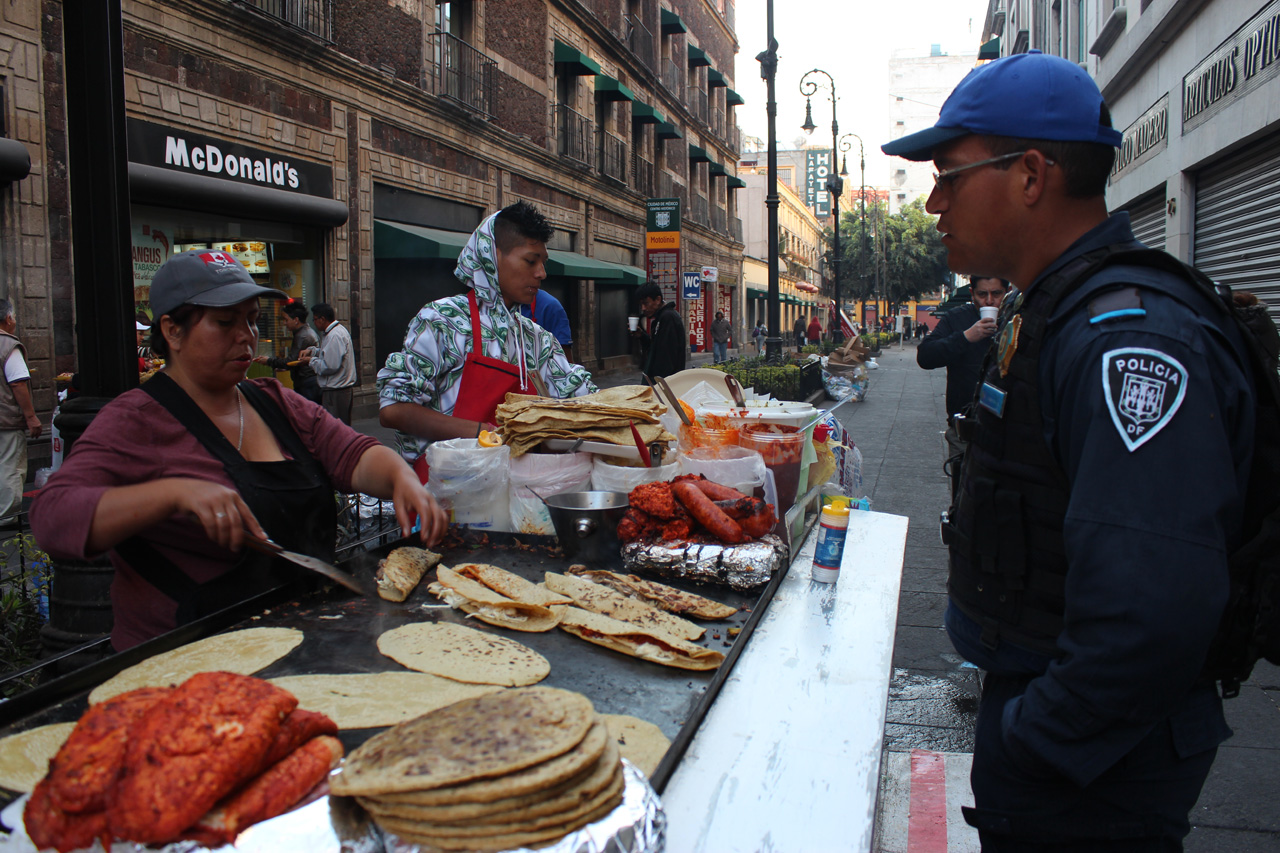
Corruption in politics
Informal vending grew significantly in Guadalajara after last year’s local elections, says Jose de Jesus Sosa Lopez, the head of Guadalajara’s Municipal Anti-Corruption Office.
In 2013, the city was “invaded by informal vendors unlike ever before,” he says. “Sixty percent don’t live in the city but come to sell products at better prices.”
Some claim that the influx was a result of vote buying in the 2012 municipal elections, where in exchange for votes, the winning party promised informal street vendors they would not interfere in their work.
In 2012, local politician Eliza Ayon allegedly asked a group of legal vendors, including Castillon, to pay the government a bribe to relocate Guadalajara’s illegal street vendors. Ayon requested biannual fees of $1,000 pesos (about US$100) per vendor, threatening they would lose the local government’s “support” that would consequentially favor informal vendors who could offer heftier bribes. The meeting was secretly recorded and published in local media, exposing corrupt practice in government.
Ayon was removed from public office and expelled from the PRI Party, but local prosecutors maintain they don’t have “full evidence” go to trial, says Jalisco State Governor Jorge Aristóteles Sandoval Díaz.
Advocates of formal vending add that the proliferation and lack of regulationof informal vending is partly due to the close relationship between local government officials and informal vending organizations. Barrios, for example, was elected a local deputy by the long-standing Institutional Revolutionary Party, or PRI in 2009.
Sosa Lopez, of Guadalajara’s Anti-Corruption office, acknowledged corruption takes place but says the practice is difficult to eradicate because it deeply embedded into the country’s way of life. “The problem we have is deeply rooted in Mexico’s traditions and the historical uses of society,” says Sosa. “What we call corrupt acts might just be social practices that have been normalized from generation to generation.”
While corruption takes place mostly among lower ranking officials—inspectors responsible for the daily supervision of commercial transactions, that walk the streets and ask for petty bribes to look in another direction. In 2013, 90 of the 500 inspectors of Guadalajara’s municipality faced administrative charges.
With perceived complacency from the government, many vendors aren’t driven to seek a formal license when they’ve already become so accustomed to the game. For Veronica, a guarache vendor who requested anonymity, she knows exactly what to do during a run-in with police. She collects her goods from the police station and relocates to another part of the city for a few days. Then she returns to her preferred location, alongside hundreds of other vendors, to sell food once more – anticipating her next encounter with authorities. That’s how she’s always done it.





